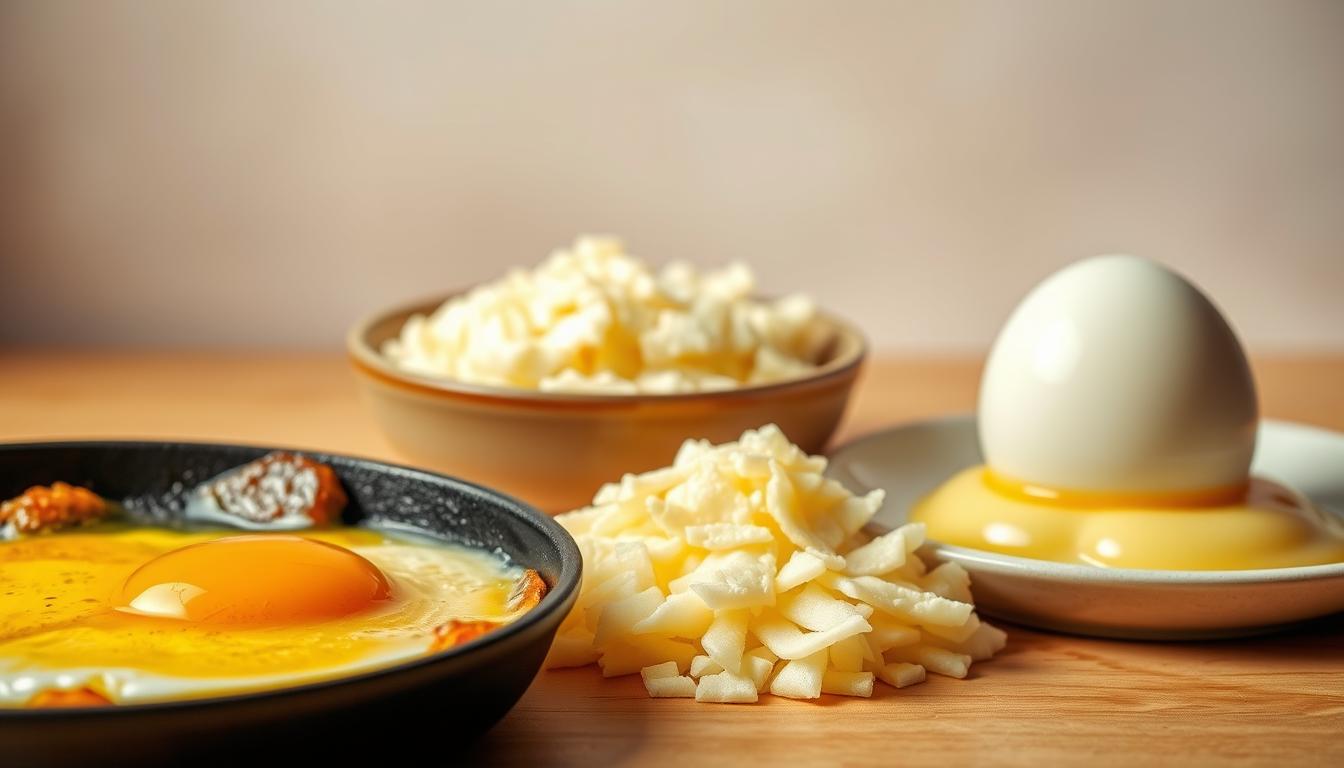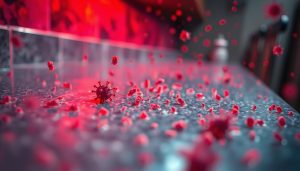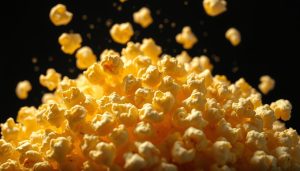Did you know chefs can transform breakfast staples into 100 distinct dishes using just heat and technique? That’s right—the same ingredient that fuels your morning can deliver wildly different textures, flavors, and nutritional results based on how you prepare it.
Your morning ritual isn’t just about taste. Research shows cooking style impacts how much protein your body absorbs. High heat can break down amino acids, while gentler methods preserve nutrients. It’s a delicate balance between texture preferences and maximizing benefits.
Families often bond over breakfast routines, yet few realize their go-to method might leave nutrition on the plate. Soft scrambles retain moisture and protein integrity better than rubbery versions. Similarly, yolks cooked at lower temperatures keep nutrients bioavailable.
Professional kitchens have cracked this code for decades. They adjust heat levels and timing to lock in value without sacrificing flavor. Now, home cooks can use these same principles to upgrade their first meal of the day.
Key Takeaways
- Cooking techniques directly affect protein absorption rates
- Gentler heat preserves nutrients better than high-temperature methods
- Texture preferences often conflict with optimal nutrient retention
- Professional chefs prioritize both flavor and nutritional outcomes
- Morning meal habits influence daily energy levels and health
- Balancing heat and timing maximizes benefits of breakfast staples
Understanding Egg Protein Retention
Cracking the code of morning nutrition starts with how proteins behave when heated. Fresh specimens with firm, jelly-like whites maintain structural advantages during preparation. This matters because albumin—the main protein in clear portions—sets faster than yolk proteins when exposed to warmth.
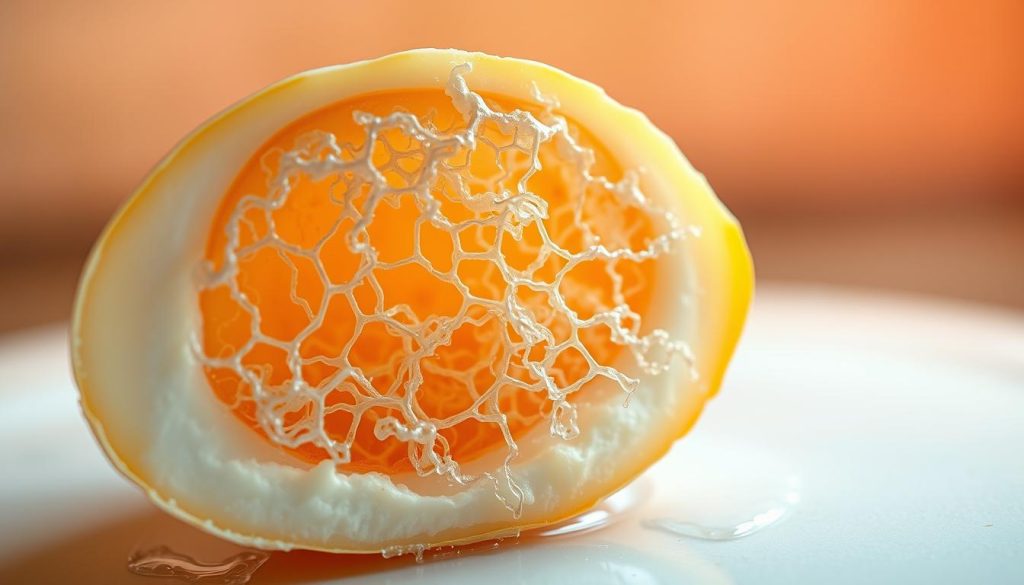
Nutritional Insights and Science Behind Egg Proteins
When you apply heat, proteins unravel and rebond—a process called denaturation. Clear portions contain mostly albumin, which solidifies around 144°F. Yolks, rich in lipoproteins, require slightly higher temperatures to fully set. Controlled warming makes these nutrients 3 times more digestible than raw versions.
Research shows fresher options retain amino acids better due to intact protein matrices. Older ones develop air pockets, causing uneven cooking and nutrient loss. Always check expiration dates for optimal results.
How Cooking Methods Affect Protein Quality
Gentle techniques preserve delicate bonds better than high-heat searing. A study in Food Science Journal found poaching maintains 92% of amino acids, while hard-boiling drops to 78%. The key? Avoid prolonged exposure to extreme temperatures.
Your pan choice matters too. Nonstick surfaces require less oil, preventing protein breakdown from excessive fat. For best outcomes, use medium-low settings and monitor cook time closely. This balance eliminates bacteria while keeping nutrients bioavailable.
The Egg Protein Puzzle: Scramble, Fry, or Poach?
Morning meals become nutrition powerhouses when preparation aligns with science. Three popular techniques dominate kitchens worldwide, each altering protein availability through distinct heat applications. Mastery lies in balancing texture preferences with nutrient preservation.
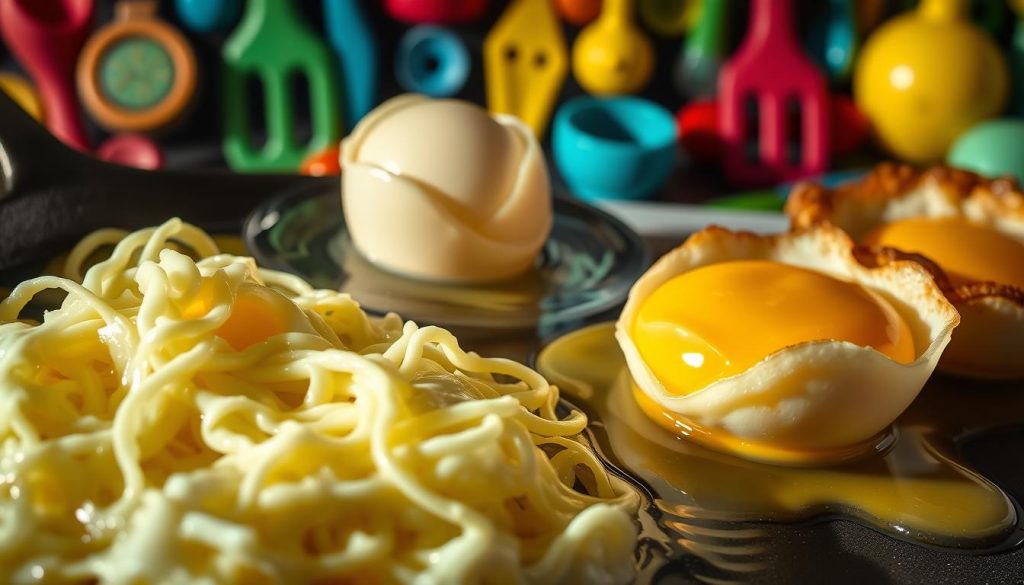
Comparing Scrambled, Fried, and Poached Techniques
Bill Granger’s iconic scrambled method uses cream and butter in a non-stick pan. Folding instead of stirring creates delicate curds that protect protein structures. This approach retains 90% of amino acids while delivering velvety texture.
For fried versions, heat olive oil in a frying pan until shimmering. A 60-second cook time yields firm whites with runny yolks. Crispy edges develop without charring proteins when temperatures stay below 350°F.
Poaching relies on water’s gentle embrace. Submerging cracked shells in simmering liquid cooks whites evenly while keeping yolks nutrient-dense. This method preserves 95% of proteins since no direct pan contact occurs.
Maximizing Protein Without Sacrificing Taste
Your pan choice directly impacts results. Non-stick surfaces require less fat, preventing protein breakdown from excess oil. Stainless steel works better for frying when seasoned properly.
| Method | Heat Source | Added Fat | Protein Retention | Texture |
|---|---|---|---|---|
| Scrambled | Pan (High) | Cream + Butter | 90% | Creamy |
| Fried | Pan (Medium-High) | Oil | 85% | Crispy |
| Poached | Water (Simmering) | None | 95% | Tender |
Flavor enthusiasts often add herbs or spices during cooking. These enhance taste without affecting protein quality. For best results, incorporate seasonings after removing from heat.
Your ideal recipe depends on daily needs. Athletic recoveries favor poached preparations, while weekend brunches might prioritize fried textures. Both satisfy when executed with precision.
Cooking Techniques and Preparation Tips
Master chefs reveal that perfect results hinge on three elements: timing, tools, and temperature. Whether crafting a quick breakfast or gourmet dish, precision separates ordinary meals from extraordinary ones. Let’s explore methods used in professional kitchens to elevate your culinary game.
Expert Recipes and Methods From Top Chefs
Mark Hannell’s ramen eggs showcase how timing transforms basics. Boil fresh specimens for 6 minutes 40 seconds, then plunge into ice water. After peeling, marinate in soy sauce, vinegar, and sugar for two days. This creates jammy yolks with savory depth while preserving protein structure.
For crispy-edged fried eggs with zucchini, heat olive oil in a non-stick frying pan. Sear thin zucchini slices for 30 seconds, crack three eggs on top, and cook at medium-high heat. Finish with chili oil and lemon for brightness without compromising nutrient density.
Innovative Tips for Perfect Results Every Time
Freshness matters most. Newer options hold tighter whites that cook evenly. Use a wide pan with 3 inches of simmering water for poaching—this prevents crowding and ensures tender textures. Always shock boiled eggs in ice water to halt cooking instantly.
Temperature, Timing, and Pan Choices Explained
Your equipment dictates success. Non-stick surfaces prevent sticking during scrambling, while stainless steel excels for frying. See how top methods compare:
| Technique | Key Tool | Time | Temperature | Protein Retention |
|---|---|---|---|---|
| Soft-Boiled | Pot | 6m 40s | Boiling | 92% |
| Fried | Frying Pan | 2-3m | Medium-High | 85% |
| Poached | Wide Pan | 3m | Simmering | 95% |
Control heat carefully. High settings work for scrambling if you stir constantly. For silky textures, add cream during the last 20 seconds. These small adjustments yield big flavor and nutritional payoffs.
Conclusion
Morning meals hold hidden potential beyond routine fuel. Through careful heat management and method selection, your kitchen becomes a lab for optimizing both nutrition and enjoyment. Gentle approaches like simmering in water preserve delicate structures best, while controlled frying balances crisp edges with nutrient density.
Your goals dictate the ideal approach. Need maximum bioavailability? Low-temperature methods win. Craving texture contrast? A hot pan with olive oil delivers without charring essentials. Even simple additions—a pinch of salt, fresh herbs—elevate basic recipes into memorable dishes.
Top chefs prove precision matters. Bill Granger’s 4-minute boiling technique or Mark Hannell’s marinated creations demonstrate how timing transforms basics. Whether using stainless steel pots or non-stick surfaces, equipment choices impact outcomes as much as temperature control.
Ultimately, success lies in aligning methods with priorities. Morning rituals evolve when you match preparation styles to nutritional needs and flavor cravings. With these insights, your first meal becomes a strategic launchpad for the day—no compromises required.
